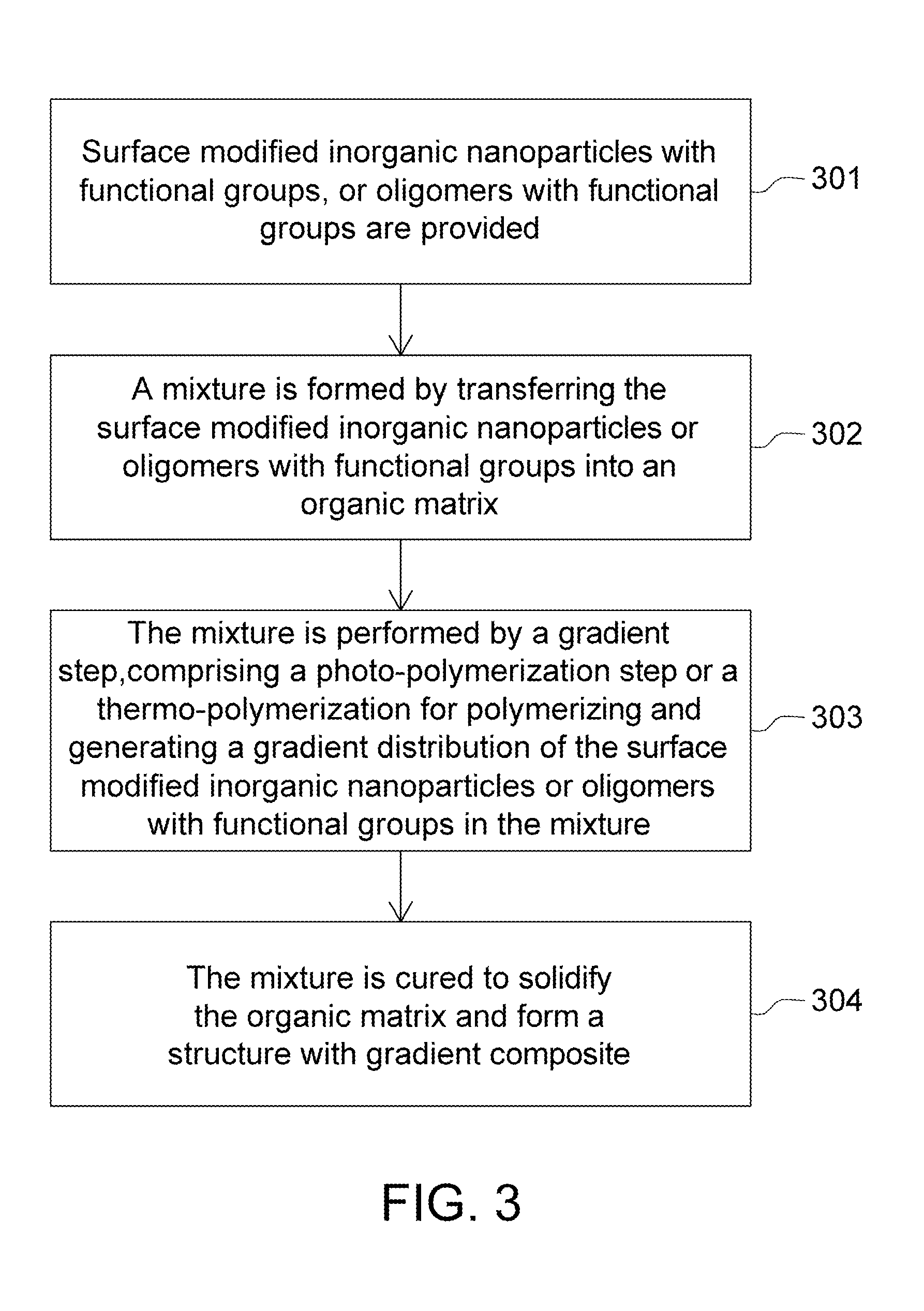Gradient Composite Material and Method of Manufacturing the Same
- Summary
- Abstract
- Description
- Claims
- Application Information
AI Technical Summary
Benefits of technology
Problems solved by technology
Method used
Image
Examples
first embodiment
Method of Manufacturing ZrO2 Composite Material and Relative Experiments
First Experiment
[0067]FIG. 5 is a process for manufacturing the composite material with gradient refraction index according to the first experiment of the first embodiment of the disclosure. Please refer to FIG. 5 and steps (A), (B) and (C) as described below. First, a solution containing surface modified inorganic metal oxide nanoparticles (i.e. ZrO2) is formed, as described in the step (A). Then, the solution containing surface modified inorganic metal oxide nanoparticles is mixed with an organic matrix to form a mixture containing O / I (organic / inorganic nanoparticles) hybrid nanocomposite, as described in the step (B). Next, the mixture prepared in the step (B) is irradiated with the UV light and then heated to solidify, as described in the step (C).
Step (A)—ZrO2:3-(Trimethoxysilyl)propyl methacrylate=1:5
[0068]First, 3.5 g of HCl (0.1 N, Riedel-de Haën) is added into a three-neck round-bottomed flask containi...
third experiment
[0087]The related experiments conducted in the third experiment are for obtaining the refraction index of the upper, middle and lower layers of the O / I hybrid resin manufacture in the first experiment (please see Table 3, Table 4, FIG. 10 and related descriptions below), and also obtaining the ratios of ZrO2 nanoparticles to epoxy of the upper, middle and lower layers of the O / I hybrid resin manufacture in the first experiment.
[0088](A) Preparing the O / I Hybrid Films of ZrO2 Nanocomposite Resin with Different Ratios (Including 50%, 70% and 90%)
[0089]1. Preparation of O / I Hybrid Film Containing 50% of ZrO2 Nanoparticles
[0090]0.5 g of the solution containing ZrO2-3-(trimethoxysilyl)propyl methacrylate nanoparticles (1:5) is added into a sampling bottle containing 0.2 g of epoxy-3,4-epoxycyclohexanecarboxylate and stirred at room temperature. 0.2 g of the curing ( / hardening) agent methyl hexahydrophthalic anhydride (MHHPA) and 0.06 g of photo-initiator diphenyl(2,4,6-trimethylbenzoyl)p...
second embodiment
Method of Manufacturing TiO2 Composite Material and Relative Experiments
PUM
| Property | Measurement | Unit |
|---|---|---|
| Fraction | aaaaa | aaaaa |
| Fraction | aaaaa | aaaaa |
| Fraction | aaaaa | aaaaa |
Abstract
Description
Claims
Application Information
 Login to View More
Login to View More - R&D
- Intellectual Property
- Life Sciences
- Materials
- Tech Scout
- Unparalleled Data Quality
- Higher Quality Content
- 60% Fewer Hallucinations
Browse by: Latest US Patents, China's latest patents, Technical Efficacy Thesaurus, Application Domain, Technology Topic, Popular Technical Reports.
© 2025 PatSnap. All rights reserved.Legal|Privacy policy|Modern Slavery Act Transparency Statement|Sitemap|About US| Contact US: help@patsnap.com



